SNOS976M November 2001 – September 2016 LMV981-N , LMV982-N
PRODUCTION DATA.
- 1 Features
- 2 Applications
- 3 Description
- 4 Revision History
- 5 Description (continued)
- 6 Pin Configuration and Functions
-
7 Specifications
- 7.1 Absolute Maximum Ratings
- 7.2 ESD Ratings
- 7.3 Recommended Operating Conditions
- 7.4 Thermal Information
- 7.5 Electrical Characteristics - DC, 1.8 V
- 7.6 Electrical Characteristics - AC, 1.8 V
- 7.7 Electrical Characteristics - DC, 2.7 V
- 7.8 Electrical Characteristics - AC, 2.7 V
- 7.9 Electrical Characteristics - DC, 5 V
- 7.10 Electrical Characteristics - AC, 5 V
- 7.11 Typical Characteristics
- 8 Detailed Description
- 9 Application and Implementation
- 10Power Supply Recommendations
- 11Layout
- 12Device and Documentation Support
- 13Mechanical, Packaging, and Orderable Information
Package Options
Mechanical Data (Package|Pins)
- DGS|10
Thermal pad, mechanical data (Package|Pins)
Orderable Information
7 Specifications
7.1 Absolute Maximum Ratings
over operating free-air temperature range (unless otherwise noted)(1)(2)| MIN | MAX | UNIT | ||
|---|---|---|---|---|
| Supply voltage (V+ – V −) | 5.5 | V | ||
| Differential input voltage | ±Supply voltage | |||
| Voltage at input/output pins | V++ 0.3 | V– - 0.3 | V | |
| Junction temperature(3) | 150 | °C | ||
| Storage temperature, Tstg | –65 | 150 | °C | |
(1) Stresses beyond those listed under Absolute Maximum Ratings may cause permanent damage to the device. These are stress ratings only, which do not imply functional operation of the device at these or any other conditions beyond those indicated under Recommended Operating Conditions. Exposure to absolute-maximum-rated conditions for extended periods may affect device reliability.
(2) For soldering specifications, see TI application report, Absolute Maximum Ratings for Soldering (SNOA549).
(3) The maximum power dissipation is a function of TJ(MAX) , RθJA, and TA. The maximum allowable power dissipation at any ambient temperature is PD = (TJ(MAX)–TA)/RθJA. All numbers apply for packages soldered directly into a PCB.
7.2 ESD Ratings
| VALUE | UNIT | |||
|---|---|---|---|---|
| V(ESD) | Electrostatic discharge | Human-body model (HBM), per ANSI/ESDA/JEDEC JS-001(1) | ±2000 | V |
| Machine model(2) | ±200 | |||
(1) Human Body Model, applicable std. MIL-STD-883, Method 3015.7. JEDEC document JEP155 states that 500-V HBM allows safe manufacturing with a standard ESD control process.
(2) Machine Model, applicable std. JESD22-A115-A (ESD MM std. of JEDEC)
7.3 Recommended Operating Conditions
over operating free-air temperature range (unless otherwise noted)| MIN | MAX | UNIT | |
|---|---|---|---|
| Supply voltage | 1.8 | 5 | V |
| Temperature | –40 | 125 | °C |
7.4 Thermal Information
| THERMAL METRIC(1) | LMV981-N | LMV982-N | UNIT | |||
|---|---|---|---|---|---|---|
| YZR (DSBGA) |
DCK (SC70) |
DBV (SOT-23) |
DGS (VSSOP) |
|||
| 6 PINS | 6 PINS | 6 PINS | 10 PINS | |||
| RθJA | Junction-to-ambient thermal resistance | 138.2 | 229.1 | 209.9 | 182.8 | °C/W |
| RθJC(top) | Junction-to-case (top) thermal resistance | 1.2 | 116.1 | 181.2 | 73.1 | °C/W |
| RθJB | Junction-to-board thermal resistance | 23.4 | 53.3 | 53.2 | 103.3 | °C/W |
| ψJT | Junction-to-top characterization parameter | 5 | 8.8 | 55.5 | 12.8 | °C/W |
| ψJB | Junction-to-board characterization parameter | 23.2 | 52.7 | 52.6 | 101.9 | °C/W |
(1) For more information about traditional and new thermal metrics, see the Semiconductor and IC Package Thermal Metrics application report.
7.5 Electrical Characteristics – DC, 1.8 V
TJ = 25°C, V+ = 1.8 V, V– = 0 V, VCM = V+/2, VO = V+/2, RL > 1 MΩ, and SHDN tied to V+ (unless otherwise noted)(1)| PARAMETER | TEST CONDITIONS | MIN(2) | TYP(3) | MAX(2) | UNIT | |||
|---|---|---|---|---|---|---|---|---|
| VOS | Input offset voltage | LMV981-N (single) | TJ = 25°C | 1 | 4 | mV | ||
| TJ = –40°C to 125°C | 6 | |||||||
| LMV982-N (dual) | TJ = 25°C | 1 | 5.5 | |||||
| TJ = –40°C to 125°C | 7.5 | |||||||
| TCVOS | Input offset voltage average drift | 5.5 | µV/°C | |||||
| IB | Input bias current | TJ = 25°C | 15 | 35 | nA | |||
| TJ = –40°C to 125°C | 50 | |||||||
| IOS | Input offset current | TJ = 25°C | 13 | 25 | nA | |||
| TJ = –40°C to 125°C | 40 | |||||||
| IS | Supply current (per channel) |
TJ = 25°C | 103 | 185 | µA | |||
| TJ = –40°C to 125°C | 205 | |||||||
| In shutdown | LMV981-N (single) |
TJ = 25°C | 0.156 | 1 | ||||
| TJ = –40°C to 125°C | 2 | |||||||
| LMV982-N (dual) |
TJ = 25°C | 0.178 | 3.5 | |||||
| TJ = –40°C to 125°C | 5 | |||||||
| CMRR | Common mode rejection ratio | LMV981-N, 0 V ≤ VCM ≤ 0.6 V, 1.4 V ≤ VCM ≤ 1.8 V(4) |
TJ = 25°C | 60 | 78 | dB | ||
| TJ = –40°C to 125°C | 55 | |||||||
| LMV982, 0 V ≤ VCM ≤ 0.6 V, 1.4 V ≤ VCM ≤ 1.8 V(4) |
TJ = 25°C | 55 | 76 | |||||
| TJ = –40°C to 125°C | 50 | |||||||
| –0.2 V ≤ VCM ≤ 0 V, 1.8 V ≤ VCM ≤ 2 V | 50 | 72 | ||||||
| PSRR | Power supply rejection ratio | 1.8 V ≤ V+ ≤ 5 V | TJ = 25°C | 75 | 100 | dB | ||
| TJ = –40°C to 125°C | 70 | |||||||
| CMVR | Input common-mode voltage | For CMRR range ≥ 50 dB | TA = 25°C | V− − 0.2 | –0.2 | V | ||
| 2.1 | V+ + 0.2 | |||||||
| TA = –40°C to 85°C | V− | V+ | ||||||
| TA = 125°C | V− + 0.2 | V+ − 0.2 | ||||||
| AV | Large signal voltage gain LMV981-N (single) |
RL = 600 Ω to 0.9 V, VO = 0.2 V to 1.6 V, VCM = 0.5 V |
TJ = 25°C | 77 | 101 | dB | ||
| TJ = –40°C to 125°C | 73 | |||||||
| RL = 2 kΩ to 0.9 V, VO = 0.2 V to 1.6 V, VCM = 0.5 V |
TJ = 25°C | 80 | 105 | |||||
| TJ = –40°C to 125°C | 75 | |||||||
| Large signal voltage gain LMV982-N (dual) |
RL = 600 Ω to 0.9 V, VO = 0.2 V to 1.6 V, VCM = 0.5 V |
TJ = 25°C | 75 | 90 | dB | |||
| TJ = –40°C to 125°C | 72 | |||||||
| RL = 2 kΩ to 0.9 V, VO = 0.2 V to 1.6 V, VCM = 0.5 V |
TJ = 25°C | 78 | 100 | |||||
| TJ = –40°C to 125°C | 75 | |||||||
| VO | Output swing | RL = 600 Ω to 0.9 V, VIN = ±100 mV |
TJ = 25°C | 1.65 | 1.72 | V | ||
| 0.077 | 0.105 | |||||||
| TJ = –40°C to 125°C | 1.63 | 0.12 | ||||||
| RL = 2 kΩ to 0.9 V, VIN = ±100 mV |
TJ = 25°C | 1.75 | 1.77 | |||||
| 0.024 | 0.035 | |||||||
| TJ = –40°C to 125°C | 1.74 | 0.04 | ||||||
| IO | Output short circuit current(5) | Sourcing, VO = 0 V, VIN = 100 mV |
TJ = 25°C | 4 | 8 | mA | ||
| TJ = –40°C to 125°C | 3.3 | |||||||
| Sinking, VO = 1.8 V, VIN = –100 mV |
TJ = 25°C | 7 | 9 | |||||
| TJ = –40°C to 125°C | 5 | |||||||
| Ton | Turnon time from shutdown | 19 | µs | |||||
| VSHDN | Turnon voltage to enable part | 1 | V | |||||
| Turnoff voltage | 0.55 | |||||||
(1) Electrical characteristics table values apply only for factory testing conditions at the temperature indicated. Factory testing conditions result in limited self-heating of the device such that TJ = TA. No ensured specification of parametric performance is indicated in the electrical tables under conditions of internal self heating where TJ > TA. Absolute Maximum Ratings indicated junction temperature limits beyond which the device may be permanently degraded, either mechanically or electrically.
(2) All limits are specified by testing or statistical analysis.
(3) Typical values represent the most likely parametric norm as determined at the time of characterization. Actual typical values may vary over time and also depend on the application and configuration. The typical values are not tested and are not ensured on shipped production material.
(4) For ensured temperature ranges, see input common-mode voltage range specifications.
(5) Applies to both single-supply and split-supply operation. Continuous short-circuit operation at elevated ambient temperature can result in exceeding the maximum allowed junction temperature of 150°C. Output currents in excess of 45 mA over long term may adversely affect reliability.
7.6 Electrical Characteristics – AC, 1.8 V
TJ = 25°C, V+ = 1.8 V, V– = 0 V, VCM = V+/2, VO = V+/2, RL > 1 MΩ, and SHDN tied to V+ (unless otherwise noted)(1)| PARAMETER | TEST CONDITIONS | MIN(2) | TYP(3) | MAX(2) | UNIT | |
|---|---|---|---|---|---|---|
| SR | Slew rate(4) | 0.35 | V/µs | |||
| GBW | Gain-bandwidth product | 1.4 | MHz | |||
| Φm | Phase margin | 67 | ° | |||
| Gm | Gain margin | 7 | dB | |||
| en | Input-referred voltage noise | f = 10 kHz, VCM = 0.5 V | 60 | nV/√Hz | ||
| in | Input-referred current noise | f = 10 kHz | 0.08 | pA/√Hz | ||
| THD | Total harmonic distortion | f = 1 kHz, AV = +1, RL = 600 Ω, VIN = 1 VPP |
0.023% | |||
| Amp-to-amp isolation(5) | 123 | dB | ||||
(1) Electrical characteristics table values apply only for factory testing conditions at the temperature indicated. Factory testing conditions result in limited self-heating of the device such that TJ = TA. No ensured specification of parametric performance is indicated in the electrical tables under conditions of internal self heating where TJ > TA. Absolute Maximum Ratings indicated junction temperature limits beyond which the device may be permanently degraded, either mechanically or electrically.
(2) All limits are specified by testing or statistical analysis.
(3) Typical values represent the most likely parametric norm as determined at the time of characterization. Actual typical values may vary over time and also depend on the application and configuration. The typical values are not tested and are not ensured on shipped production material.
(4) Connected as voltage follower with input step from V− to V+. Number specified is the slower of the positive and negative slew rates.
(5) Input referred, RL = 100 kΩ connected to V+/ 2. Each amp excited in turn with 1 kHz to produce VO = 3 VPP (for supply voltages < 3 V, VO = V+).
7.7 Electrical Characteristics – DC, 2.7 V
TJ = 25°C, V+ = 2.7 V, V– = 0 V, VCM = V+/2, VO = V+/2, RL > 1 MΩ, and SHDN tied to V+ (unless otherwise noted)(1)| PARAMETER | TEST CONDITIONS | MIN(2) | TYP(3) | MAX(2) | UNIT | |||
|---|---|---|---|---|---|---|---|---|
| VOS | Input offset voltage | LMV981-N (single) | TJ = 25°C | 1 | 4 | mV | ||
| TJ = –40°C to 125°C | 6 | |||||||
| LMV982-N (dual) | TJ = 25°C | 1 | 6 | mV | ||||
| TJ = –40°C to 125°C | 7.5 | |||||||
| TCVOS | Input offset voltage average drift | 5.5 | µV/°C | |||||
| IB | Input bias current | TJ = 25°C | 15 | 35 | nA | |||
| TJ = –40°C to 125°C | 50 | |||||||
| IOS | Input offset current | TJ = 25°C | 8 | 25 | nA | |||
| TJ = –40°C to 125°C | 40 | |||||||
| IS | Supply current (per channel) |
TJ = 25°C | 105 | 190 | µA | |||
| TJ = –40°C to 125°C | 210 | |||||||
| In shutdown | LMV981-N (single) |
TJ = 25°C | 0.061 | 1 | ||||
| TJ = –40°C to 125°C | 2 | |||||||
| LMV982-N (dual) |
TJ = 25°C | 0.101 | 3.5 | |||||
| TJ = –40°C to 125°C | 5 | |||||||
| CMRR | Common mode rejection ratio | LMV981-N, 0 V ≤ VCM ≤ 1.5 V, 2.3 V ≤ VCM ≤ 2.7 V(4) |
TJ = 25°C | 60 | 81 | dB | ||
| TJ = –40°C to 125°C | 55 | |||||||
| LMV982, 0 V ≤ VCM ≤ 1.5 V, 2.3 V ≤ VCM ≤ 2.7 V(4) |
TJ = 25°C | 55 | 80 | |||||
| TJ = –40°C to 125°C | 50 | |||||||
| −0.2 V ≤ VCM ≤ 0 V, 2.7 V ≤ VCM ≤ 2.9 V | 50 | 74 | ||||||
| PSRR | Power supply rejection ratio | 1.8 V ≤ V+ ≤ 5 V, VCM = 0.5 V | TJ = 25°C | 75 | 100 | dB | ||
| TJ = –40°C to 125°C | 70 | |||||||
| CMVR | Input common mode voltage | For CMRR Range ≥ 50 dB | TA = 25°C | V− − 0.2 | –0.2 | V | ||
| 3 | V+ + 0.2 | |||||||
| TA = −40°C to 85°C | V− | V+ | ||||||
| TA = 125°C | V− + 0.2 | V+ − 0.2 | ||||||
| AV | Large signal voltage gain LMV981-N (single) |
RL = 600 Ω to 1.35 V, VO = 0.2 V to 2.5 V |
TJ = 25°C | 87 | 104 | dB | ||
| TJ = –40°C to 125°C | 86 | |||||||
| RL = 2 kΩ to 1.35 V, VO = 0.2 V to 2.5 V |
TJ = 25°C | 92 | 110 | |||||
| TJ = –40°C to 125°C | 91 | |||||||
| Large signal voltage gain LMV982-N (dual) |
RL = 600 Ω to 1.35 V, VO = 0.2 V to 2.5 V |
TJ = 25°C | 78 | 90 | ||||
| TJ = –40°C to 125°C | 75 | |||||||
| RL = 2 kΩ to 1.35 V, VO = 0.2 V to 2.5 V |
TJ = 25°C | 81 | 100 | |||||
| TJ = –40°C to 125°C | 78 | |||||||
| VO | Output swing | RL = 600 Ω to 1.35 V, VIN = ±100 mV |
TJ = 25°C | 2.55 | 2.62 | V | ||
| 0.083 | 0.11 | |||||||
| TJ = –40°C to 125°C | 2.53 | 0.13 | ||||||
| RL = 2 kΩ to 1.35 V, VIN = ±100 mV |
TJ = 25°C | 2.65 | 2.675 | |||||
| 0.025 | 0.04 | |||||||
| TJ = –40°C to 125°C | 2.64 | 0.045 | ||||||
| IO | Output short circuit current(5) | Sourcing, VO = 0 V, VIN = 100 mV |
TJ = 25°C | 20 | 30 | mA | ||
| TJ = –40°C to 125°C | 15 | |||||||
| Sinking, VO = 0 V, VIN = –100 mV |
TJ = 25°C | 18 | 25 | |||||
| TJ = –40°C to 125°C | 12 | |||||||
| Ton | Turnon time from shutdown | 12.5 | µs | |||||
| VSHDN | Turnon voltage to enable part | 1.9 | V | |||||
| Turnoff voltage | 0.8 | |||||||
(1) Electrical characteristics table values apply only for factory testing conditions at the temperature indicated. Factory testing conditions result in limited self-heating of the device such that TJ = TA. No ensured specification of parametric performance is indicated in the electrical tables under conditions of internal self heating where TJ > TA. Absolute Maximum Ratings indicated junction temperature limits beyond which the device may be permanently degraded, either mechanically or electrically.
(2) All limits are specified by testing or statistical analysis.
(3) Typical values represent the most likely parametric norm as determined at the time of characterization. Actual typical values may vary over time and also depend on the application and configuration. The typical values are not tested and are not ensured on shipped production material.
(4) For ensured temperature ranges, see input common mode voltage range specifications.
(5) Applies to both single-supply and split-supply operation. Continuous short-circuit operation at elevated ambient temperature can result in exceeding the maximum allowed junction temperature of 150°C. Output currents in excess of 45 mA over long term may adversely affect reliability.
7.8 Electrical Characteristics – AC, 2.7 V
TJ = 25°C, V+ = 2.7 V, V − = 0 V, VCM = 1 V, VO = 1.35 V, RL > 1 MΩ, and SHDN tied to V+ (unless otherwise noted)(1)| PARAMETER | TEST CONDITIONS | MIN(2) | TYP(3) | MAX(2) | UNIT | |
|---|---|---|---|---|---|---|
| SR | Slew rate(4) | 0.4 | V/µs | |||
| GBW | Gain-bandwidth product | 1.4 | MHz | |||
| Φm | Phase margin | 70 | ° | |||
| Gm | Gain margin | 7.5 | dB | |||
| en | Input-referred voltage noise | f = 10 kHz, VCM = 0.5 V | 57 | nV/√Hz | ||
| in | Input-referred current noise | f = 10 kHz | 0.08 | pA/√Hz | ||
| THD | Total harmonic distortion | f = 1 kHz, AV = +1, RL = 600 Ω, VIN = 1 VPP |
0.022% | |||
| Amp-to-amp isolation(5) | 123 | dB | ||||
(1) Electrical characteristics table values apply only for factory testing conditions at the temperature indicated. Factory testing conditions result in limited self-heating of the device such that TJ = TA. No ensured specification of parametric performance is indicated in the electrical tables under conditions of internal self heating where TJ > TA. Absolute Maximum Ratings indicated junction temperature limits beyond which the device may be permanently degraded, either mechanically or electrically.
(2) All limits are specified by testing or statistical analysis.
(3) Typical values represent the most likely parametric norm as determined at the time of characterization. Actual typical values may vary over time and also depend on the application and configuration. The typical values are not tested and are not ensured on shipped production material.
(4) Connected as voltage follower with input step from V− to V+. Number specified is the slower of the positive and negative slew rates.
(5) Input referred, RL = 100 kΩ connected to V+/2. Each amp excited in turn with 1 kHz to produce VO = 3 VPP (for supply voltages < 3 V, VO = V+).
7.9 Electrical Characteristics – DC, 5 V
TJ = 25°C, V+ = 5 V, V − = 0 V, VCM = V+/2, VO = V+/2, RL > 1 MΩ, and SHDN tied to V+ (unless otherwise noted)(1)| PARAMETER | TEST CONDITIONS | MIN(2) | TYP(3) | MAX(2) | UNIT | |||
|---|---|---|---|---|---|---|---|---|
| VOS | Input offset voltage | LMV981-N (single) | TJ = 25°C | 1 | 4 | mV | ||
| TJ = –40°C to 125°C | 6 | |||||||
| LMV982-N (dual) | TJ = 25°C | 1 | 5.5 | |||||
| TJ = –40°C to 125°C | 7.5 | |||||||
| TCVOS | Input offset voltage average drift | 5.5 | µV/°C | |||||
| IB | Input bias current | TJ = 25°C | 14 | 35 | nA | |||
| TJ = –40°C to 125°C | 50 | |||||||
| IOS | Input offset current | TJ = 25°C | 9 | 25 | nA | |||
| TJ = –40°C to 125°C | 40 | |||||||
| IS | Supply current (per channel) | TJ = 25°C | 116 | 210 | µA | |||
| TJ = –40°C to 125°C | 230 | |||||||
| In shutdown | LMV981-N (single) | TJ = 25°C | 0.201 | 1 | µA | |||
| TJ = –40°C to 125°C | 2 | |||||||
| LMV982-N (dual) | TJ = 25°C | 0.302 | 3.5 | |||||
| TJ = –40°C to 125°C | 5 | |||||||
| CMRR | Common mode rejection ratio(4) | 0 V ≤ VCM ≤ 3.8 V, 4.6 V ≤ VCM ≤ 5 V |
TJ = 25°C | 60 | 86 | dB | ||
| TJ = –40°C to 125°C | 55 | |||||||
| −0.2 V ≤ VCM ≤ 0 V, 5 V ≤ VCM ≤ 5.2 V | 50 | 78 | ||||||
| PSRR | Power supply rejection ratio | 1.8 V ≤ V+ ≤ 5 V, VCM = 0.5 V |
TJ = 25°C | 75 | 100 | dB | ||
| TJ = –40°C to 125°C | 70 | |||||||
| CMVR | Input common mode voltage | For CMRR range ≥ 50 dB | TA = 25°C | V− − 0.2 | –0.2 | V | ||
| 5.3 | V+ + 0.2 | |||||||
| TA = −40°C to 85°C | V− | V+ | ||||||
| TA = 125°C | V− + 0.3 | V+ − 0.3 | ||||||
| AV | Large signal voltage gain LMV981-N (single) |
RL = 600 Ω to 2.5 V, VO = 0.2 V to 4.8 V |
TJ = 25°C | 88 | 102 | dB | ||
| TJ = –40°C to 125°C | 87 | |||||||
| RL = 2 kΩ to 2.5 V, VO = 0.2 V to 4.8 V |
TJ = 25°C | 94 | 113 | |||||
| TJ = –40°C to 125°C | 93 | |||||||
| Large signal voltage gain LMV982-N (dual) |
RL = 600 Ω to 2.5 V, VO = 0.2 V to 4.8 V |
TJ = 25°C | 81 | 90 | dB | |||
| TJ = –40°C to 125°C | 78 | |||||||
| RL = 2 kΩ to 2.5 V, VO = 0.2 V to 4.8 V |
TJ = 25°C | 85 | 100 | |||||
| TJ = –40°C to 125°C | 82 | |||||||
| VO | Output swing | RL = 600 Ω to 2.5 V, VIN = ±100 mV |
TJ = 25°C | 4.855 | 4.89 | V | ||
| 0.12 | 0.16 | |||||||
| TJ = –40°C to 125°C | 4.835 | 0.18 | ||||||
| RL = 2 kΩ to 2.5 V, VIN = ±100 mV |
TJ = 25°C | 4.945 | 4.967 | |||||
| 0.037 | 0.065 | |||||||
| TJ = –40°C to 125°C | 4.935 | 0.075 | ||||||
| IO | Output short-circuit current(5) | LMV981-N, sourcing, VO = 0 V, VIN = 100 mV |
TJ = 25°C | 80 | 100 | mA | ||
| TJ = –40°C to 125°C | 68 | |||||||
| Sinking, VO = 5 V, VIN = −100 mV |
TJ = 25°C | 58 | 65 | |||||
| TJ = –40°C to 125°C | 45 | |||||||
| Ton | Turnon time from shutdown | 8.4 | µs | |||||
| VSHDN | Turnon voltage to enable part | 4.2 | V | |||||
| Turnoff voltage | 0.8 | |||||||
(1) Electrical characteristics table values apply only for factory testing conditions at the temperature indicated. Factory testing conditions result in limited self-heating of the device such that TJ = TA. No ensured specification of parametric performance is indicated in the electrical tables under conditions of internal self heating where TJ > TA. Absolute Maximum Ratings indicated junction temperature limits beyond which the device may be permanently degraded, either mechanically or electrically.
(2) All limits are specified by testing or statistical analysis.
(3) Typical values represent the most likely parametric norm as determined at the time of characterization. Actual typical values may vary over time and also depend on the application and configuration. The typical values are not tested and are not ensured on shipped production material.
(4) For ensured temperature ranges, see input common mode voltage range specifications.
(5) Applies to both single-supply and split-supply operation. Continuous short-circuit operation at elevated ambient temperature can result in exceeding the maximum allowed junction temperature of 150°C. Output currents in excess of 45 mA over long term may adversely affect reliability.
7.10 Electrical Characteristics – AC, 5 V
TJ = 25°C, V+ = 5 V, V − = 0 V, VCM = V+/2, VO = 2.5 V, R L > 1 MΩ, and SHDN tied to V+ (unless otherwise noted)(1)| PARAMETER | TEST CONDITIONS | MIN(2) | TYP(3) | MAX(2) | UNIT | |
|---|---|---|---|---|---|---|
| SR | Slew rate(4) | 0.42 | V/µs | |||
| GBW | Gain-bandwidth product | 1.5 | MHz | |||
| Φm | Phase margin | 71 | ° | |||
| Gm | Gain margin | 8 | dB | |||
| en | Input-referred voltage noise | f = 10 kHz, VCM = 1 V | 50 | nV/√Hz | ||
| in | Input-referred current noise | f = 10 kHz | 0.08 | pA/√Hz | ||
| THD | Total harmonic distortion | f = 1 kHz, AV = +1, RL = 600 Ω, VO = 1 V PP |
0.022% | |||
| Amp-to-amp isolation(5) | 123 | dB | ||||
(1) Electrical characteristics table values apply only for factory testing conditions at the temperature indicated. Factory testing conditions result in limited self-heating of the device such that TJ = TA. No ensured specification of parametric performance is indicated in the electrical tables under conditions of internal self heating where TJ > TA. Absolute Maximum Ratings indicated junction temperature limits beyond which the device may be permanently degraded, either mechanically or electrically.
(2) All limits are specified by testing or statistical analysis.
(3) Typical values represent the most likely parametric norm as determined at the time of characterization. Actual typical values may vary over time and also depend on the application and configuration. The typical values are not tested and are not ensured on shipped production material.
(4) Connected as voltage follower with input step from V– to V+. Number specified is the slower of the positive and negative slew rates.
(5) Input referred, RL = 100 kΩ connected to V+/2. Each amp excited in turn with 1 kHz to produce VO = 3 VPP (for supply voltages < 3 V, VO = V+).
7.11 Typical Characteristics
VS = 5 V, single supply, and TA = 25°C (unless otherwise noted)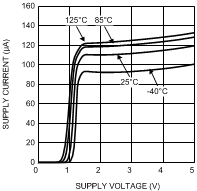 Figure 1. Supply Current vs Supply Voltage (LMV981-N)
Figure 1. Supply Current vs Supply Voltage (LMV981-N)
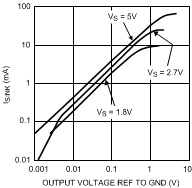 Figure 3. Sinking Current vs Output Voltage
Figure 3. Sinking Current vs Output Voltage
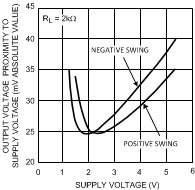 Figure 5. Output Voltage Swing vs Supply Voltage
Figure 5. Output Voltage Swing vs Supply Voltage
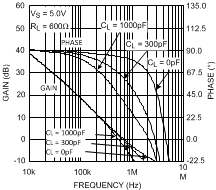 Figure 7. Gain and Phase vs Frequency
Figure 7. Gain and Phase vs Frequency
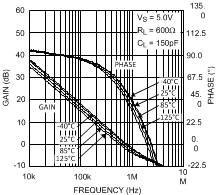 Figure 9. Gain and Phase vs Frequency
Figure 9. Gain and Phase vs Frequency
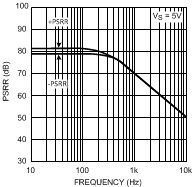 Figure 11. PSRR vs Frequency
Figure 11. PSRR vs Frequency
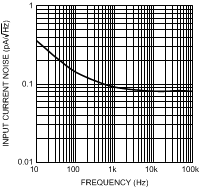 Figure 13. Input Current Noise vs Frequency
Figure 13. Input Current Noise vs Frequency
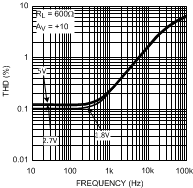 Figure 15. THD vs Frequency
Figure 15. THD vs Frequency
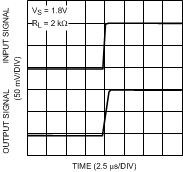 Figure 17. Small-Signal Noninverting Response
Figure 17. Small-Signal Noninverting Response
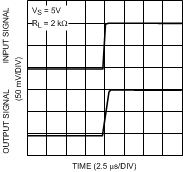 Figure 19. Small-Signal Noninverting Response
Figure 19. Small-Signal Noninverting Response
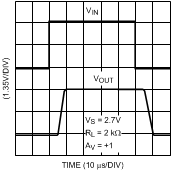 Figure 21. Large-Signal Noninverting Response
Figure 21. Large-Signal Noninverting Response
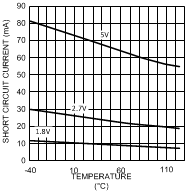 Figure 23. Short-Circuit Current vs Temperature (Sinking)
Figure 23. Short-Circuit Current vs Temperature (Sinking)
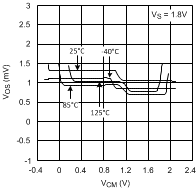 Figure 25. Offset Voltage vs Common Mode Range
Figure 25. Offset Voltage vs Common Mode Range
 Figure 27. Offset Voltage vs Common Mode Range
Figure 27. Offset Voltage vs Common Mode Range
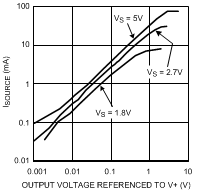 Figure 2. Sourcing Current vs Output Voltage
Figure 2. Sourcing Current vs Output Voltage
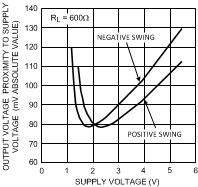 Figure 4. Output Voltage Swing vs Supply Voltage
Figure 4. Output Voltage Swing vs Supply Voltage
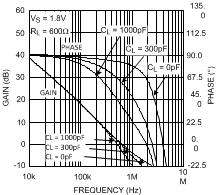 Figure 6. Gain and Phase vs Frequency
Figure 6. Gain and Phase vs Frequency
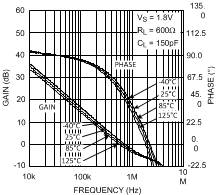 Figure 8. Gain and Phase vs Frequency
Figure 8. Gain and Phase vs Frequency
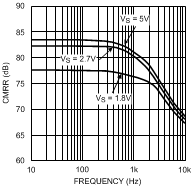 Figure 10. CMRR vs Frequency
Figure 10. CMRR vs Frequency
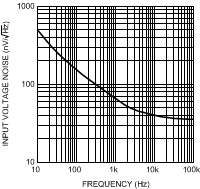 Figure 12. Input Voltage Noise vs Frequency
Figure 12. Input Voltage Noise vs Frequency
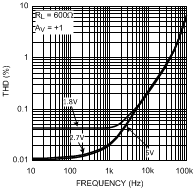 Figure 14. THD vs Frequency
Figure 14. THD vs Frequency
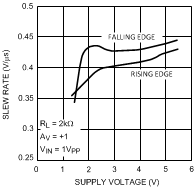 Figure 16. Slew Rate vs Supply Voltage
Figure 16. Slew Rate vs Supply Voltage
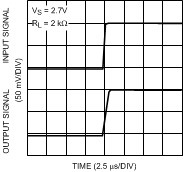 Figure 18. Small-Signal Noninverting Response
Figure 18. Small-Signal Noninverting Response
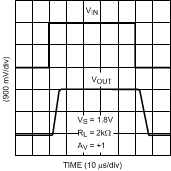 Figure 20. Large-Signal Noninverting Response
Figure 20. Large-Signal Noninverting Response
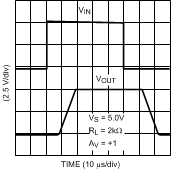 Figure 22. Large-Signal Noninverting Response
Figure 22. Large-Signal Noninverting Response
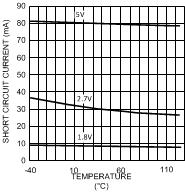 Figure 24. Short-Circuit Current vs Temperature (Sourcing)
Figure 24. Short-Circuit Current vs Temperature (Sourcing)
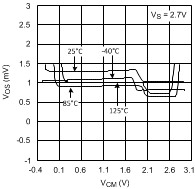 Figure 26. Offset Voltage vs Common Mode Range
Figure 26. Offset Voltage vs Common Mode Range